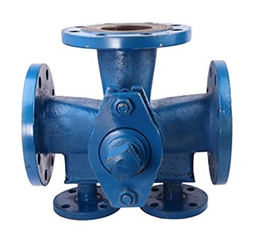Plug Valve Troubleshooting
Plug valves are critical components in fluid control systems, but they may malfunction for a variety of reasons during long-term operation. Timely and accurate troubleshooting is essential to ensure the proper operation of the system. The ATO shop will introduce some of the common faults that may occur in plug valves and their troubleshooting methods, to help engineers and operators better maintain and manage the fluid control system.
Plug Valve Internal Leakage
Cause
- Dried sealing grease or scratched spool.
- Damage to the spool caused by throttling operation.
- Incorrect spool position.
Measures
- Clean and grease the spool.
- Repair or rotate the spool 180 degrees.
- Adjust spool screws.
Difficulty in Opening and Closing the Plug Valve
Cause
- High friction between valve plug and valve body.
- The bottom bolt of the valve is too tight.
- Old sealing grease injection deterioration or excessive buildup.
- Gearbox transmission problems.
Measures
- Inject cleaning fluid to clean and lubricate the valve, and do sufficient activities.
- Loosen the bolts appropriately.
- Inject cleaning fluid to remove old sealing grease.
- Open the gearbox, lubricate, and repair.
Plug Valves Do not Operate
Cause
- Holding between valve plug and valve body.
- The bottom bolt of the valve is too tight.
- The foreign matter inside the valve cavity seizes the valve.
- The gearbox can not drive.
Measures
- Inject cleaning fluid to clean and lubricate the valve, and do sufficient activity.
- Loosen the bolts appropriately.
- Remove foreign matter.
- Open the gearbox, lubricate, and repair.
Plug Valve Repair Tips
- All repairs to plug valves that utilize welding operations and repairs to welds must use welders and welding processes that meet the requirements of ASME Section IX standards.
- All welding, including repairs to welds, shall be performed using a low-hydrogen welding process. Weld repairs shall be made by approved processes, and repairs to major weld joints shall require user approval.
- Weld repairs on castings for plug valves should be completed before production heat treatment. Weld repairs or repairs to weld fittings must be completed before any heat treatment process to relieve metal stress.
- Hardness tests are required for repairs on castings because of minor hardness shifts across the weld seam, heat-affected zone, and base material. The highest Vickers hardness value measured using a 500-gram load shall be 310 HV.
- The same NDE method originally used to test the defects should be used for all repaired defects and tested to the same standard.
- Before welding, the location to be welded shall be cleaned with suitable tools to remove soil or metal debris. Repairs shall not be made to blemishes that reach a depth of 20% or more of the thickness of the object being repaired.
Plug Valve Repair Precautions
- Repair should be welded by standard welders.
- Before carrying out the refurbishment should be approved by the user before welding.
- Welding on the maintenance of the hankou should be used low hydrogen welding process.
- The plug valve on the casting should be preheated before welding.
- Repair of the weld ports should be carried out before the preheating process.
- Pieces should be hardness tested before repair, shadowing the possibility of hardness transverse shifts during welding.
- Maximum Vickers hardness shall be 310 HV when measured with a 500-gram load.
- The welding area should be cleaned before welding, and dirt as well as dust should be removed.
Through timely troubleshooting, the reliability and stability of the plug valve can be effectively improved to ensure the normal operation of the fluid control system. In the process of troubleshooting, the operator should pay attention to safety and follow the relevant operating procedures to ensure the smooth progress of maintenance work. At the same time, regular maintenance work is also the key to preventing failures to extend the service life of the plug valve and improve the overall efficiency of the system.

